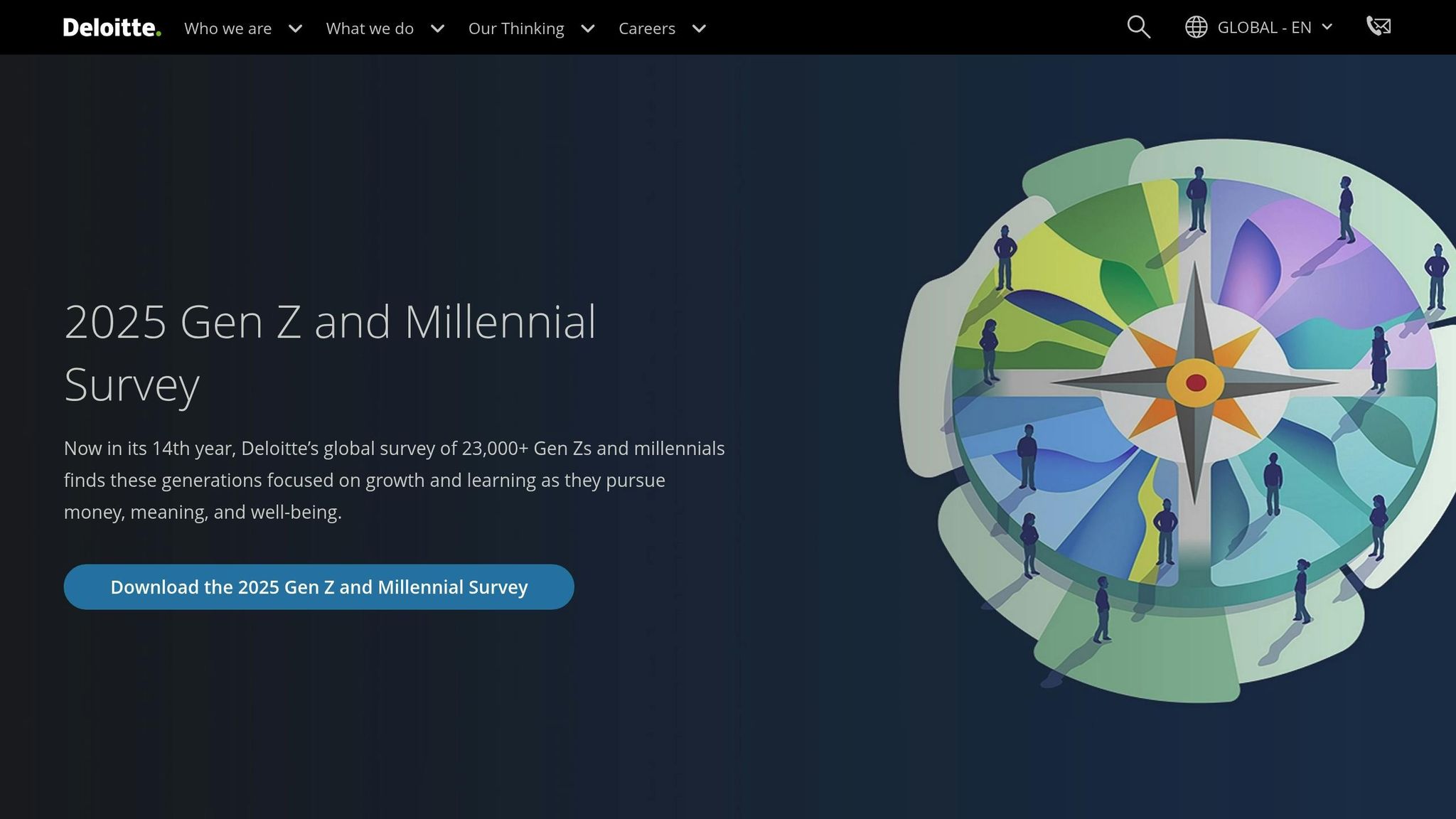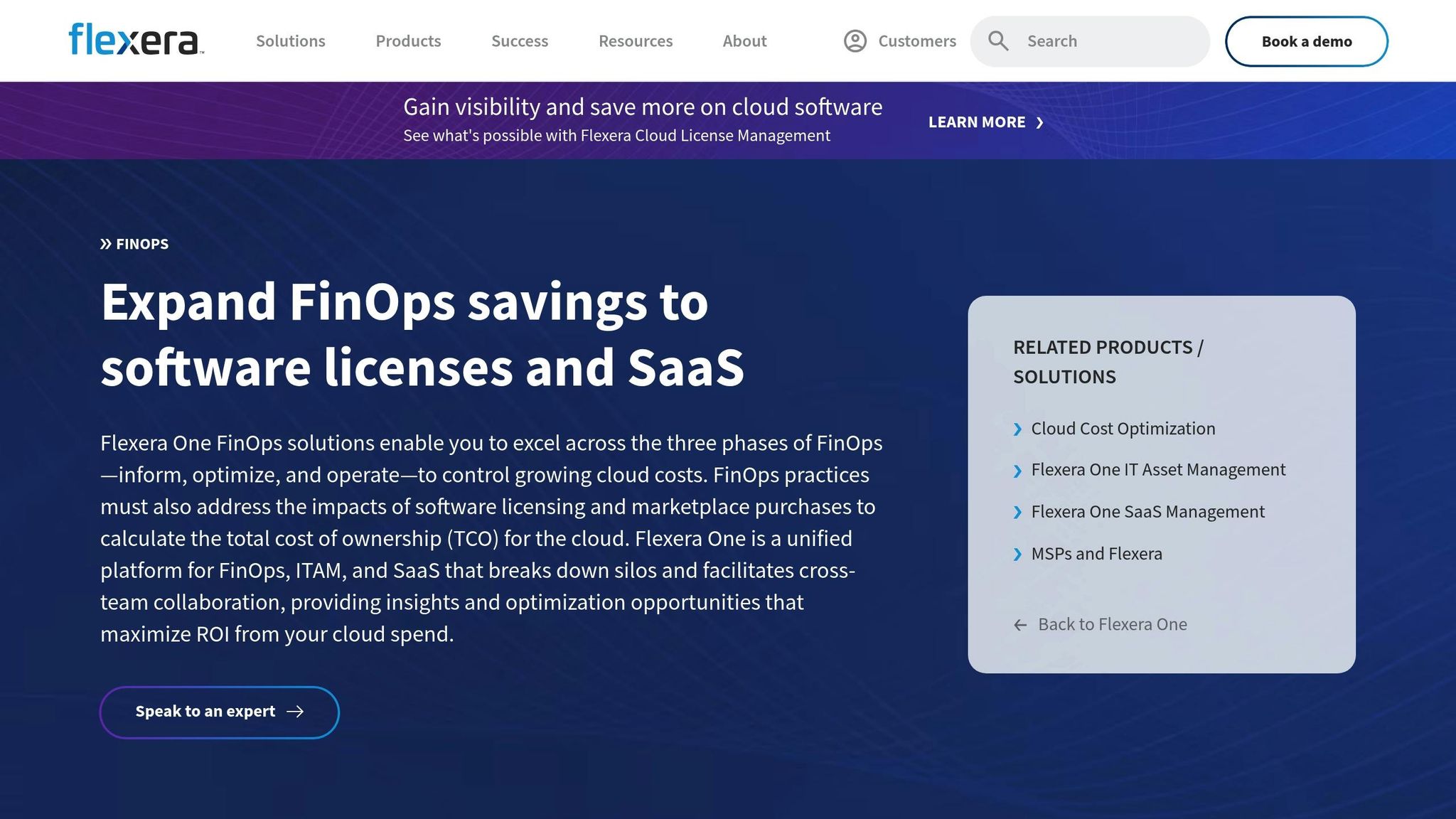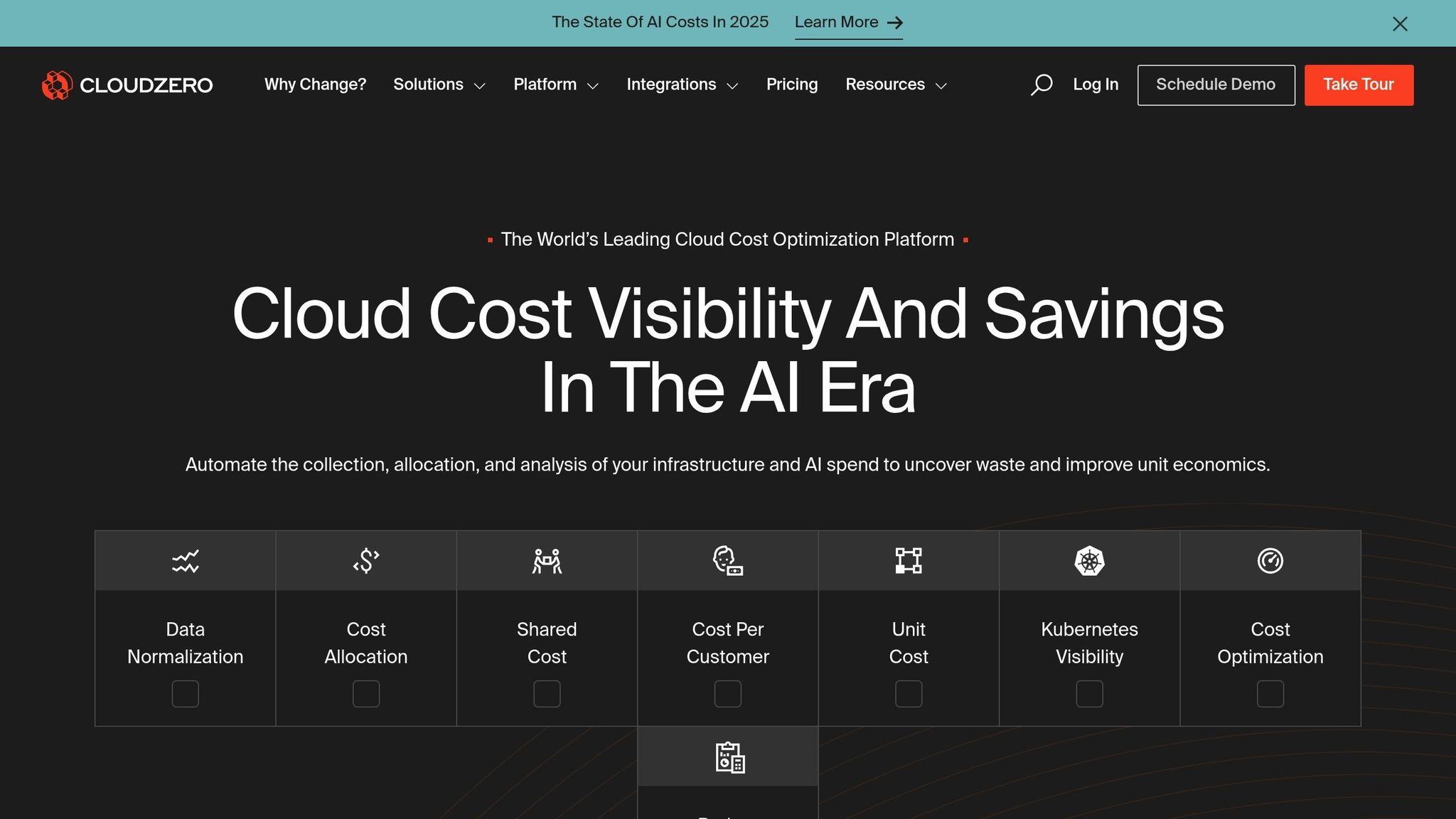Managing cloud costs in hybrid environments is challenging, but FinOps tools can save up to 30% on cloud expenses and 50% on infrastructure costs. Here's a quick breakdown of four top tools to help you optimise your cloud spending:
- Finout: Real-time monitoring, consolidated multi-cloud cost views, and flexible cost allocation with Virtual Tagging.
- Flexera One FinOps: Enterprise-grade cost management with advanced tagging, multi-cloud reporting, and currency localisation.
- Datadog Cloud Cost Management: Combines cost management with performance monitoring, offering detailed insights and anomaly detection.
- CloudZero: Links cloud costs to business outcomes, automates cost allocation, and provides granular insights.
Quick Comparison
| Tool | Key Features | Ideal For | Pricing (approx.) |
|---|---|---|---|
| Finout | Unified cost dashboards, anomaly detection, Virtual Tagging | Dynamic allocation without heavy tagging | From £800/month |
| Flexera One | Multi-cloud reporting, advanced tagging, currency conversion | Large enterprises with complex structures | £39,500/year (base) |
| Datadog | Integrated cost and performance monitoring, anomaly detection | Teams already using Datadog tools | Based on usage |
| CloudZero | Business outcome-focused, automated cost allocation | Organisations prioritising cost alignment | Custom pricing |
Choose a tool based on your hybrid cloud setup, FinOps maturity, and budget. With cloud spending expected to rise, adopting the right FinOps tool can help you control costs and improve efficiency.
Optimize your hybrid cloud costs with Deloitte and IBM

1. Finout

Finout offers a platform that provides real-time insights into cloud costs, helping organisations track, manage, and reduce their spending. What’s great is that it doesn’t require additional coding or agents to get started, making it a straightforward solution for businesses looking to optimise their cloud expenses [3].
Supported environments
Finout shines in hybrid cloud setups, thanks to its MegaBill feature. This tool consolidates costs from multiple cloud providers into a single, unified dashboard. For UK businesses managing hybrid infrastructures, this centralised view simplifies cost management and streamlines operations [5].
Real-time monitoring
One of Finout's standout features is its real-time monitoring, powered by anomaly detection. This system flags unusual spending patterns, allowing users to act quickly. You can also set custom budget thresholds to receive instant alerts if limits are exceeded [3]. For instance, Holland & Barrett saved over £60,000 on their Datadog expenses, and Vibrent Health managed to cut their cloud costs by 43% [3].
Finout has given us greater transparency and control over cloud costs, streamlining FinOps with advanced features like anomaly detection and customisable reports. Its innovation aligns perfectly with our goals, helping us optimise spending and make data-driven decisions.
- Anthony Logan, Director of FinOps and Partnerships [1]
Cost allocation and tagging
With its Virtual Tagging feature, Finout ensures accurate cost allocation across teams in real time. This is especially useful in hybrid cloud setups, where maintaining consistent tagging can be a challenge. Additionally, its RBAC-enabled dashboards provide detailed, tailored insights for different users [6]. The results speak for themselves - Choice Hotels achieved 98% cost allocation accuracy with response times 90% faster than before. One customer even recouped the platform's cost within days, achieving a 150% ROI in the first week [3][6].
Finout's exceptional granularity in cost allocation has been an invaluable asset, providing us with unprecedented insight into our cloud spend.
- Vijay Kurra, Cloud DevFinOps [1]
Pricing and reputation
Finout’s pricing is transparent, roughly 1% of your total cloud bill. Plans start at around £800 per month for businesses, with professional plans at approximately £1,600 per month. Custom pricing is also available for enterprise needs. The platform has earned a strong reputation, boasting a 4.8/5 rating on Gartner Peer Insights. Users frequently highlight its ease of setup and excellent customer support [2][4].
Next, we’ll take a closer look at Flexera One FinOps for additional comparisons.
2. Flexera One FinOps

Flexera One FinOps brings together cloud and on-premises IT costs into a single, user-friendly dashboard. By removing the hassle of navigating multiple cost management tools, it’s especially helpful for UK businesses with intricate hybrid infrastructures. The platform gathers and analyses expenses from major cloud providers like AWS, Azure, and IBM, as well as SaaS platforms such as Salesforce. This integration simplifies cost tracking for even the most complex setups.
Supported environments
Flexera One provides a full Total Cost of Ownership (TCO) view by combining software licensing costs with cloud resource expenses. This approach is particularly useful in hybrid environments, where traditional software licences meet modern cloud consumption models. The platform can process cost data from any cloud provider, in any currency, and delivers multi-cloud reporting in a single, easy-to-read tabular format.
Common bill ingest: ingest cost data from any cloud, in any currency, and all related cloud costs[10]
Real-time monitoring
With its unified cost view, Flexera One also offers real-time monitoring, continuously scanning for cost spikes and alerting users when spending patterns deviate from expectations. This feature has enabled customers to save an average of 40% on cloud costs. For instance, AstraZeneca reportedly saved $2 million annually using this tool [8].
My data is right. My data comes out of Flexera. Anybody that looks elsewhere, they're getting the wrong numbers.- Senior Director of Cloud, Large Food and Beverage Manufacturer [7]
Cost allocation and tagging
Flexera One simplifies cost allocation through an advanced tagging system. By leveraging tags found in billing data, it creates structured allocation dimensions. Rule-based dimensions further streamline tagging strategies, improving accuracy and eliminating the need for tagging at the resource level. It can also integrate AWS account tags to allocate costs, even for spending that previously couldn’t be tagged [9].
Localisation features
For organisations in the UK, Flexera One includes localisation options through its currency management system. Using integration with Xe.com, it automatically converts cloud costs into any currency, making it ideal for global businesses with diverse currency needs.
Currency adjustment program: automatic conversion of cloud costs to any currency through integration with Xe.com. This makes multi-cloud strategies more effective for global enterprises that work across multiple currencies.[11]
Users can customise currency preferences, set exchange rates, and define a default currency for enterprise-wide reporting. Individual users can also personalise their dashboards with their preferred currency.
Pricing
Flexera One’s pricing is tailored for enterprise needs, with costs based on a percentage of tracked cloud spending. For a 12-month contract, the Cloud Cost Optimisation (CCO) Platform is priced at $50,000 (around £39,500) for up to $1,000,000 (approximately £790,000) in annual cloud spending. Any usage beyond this limit incurs an overage fee of $0.01 per dollar [12]. These features make Flexera One a standout choice for managing hybrid cloud costs effectively.
3. Datadog Cloud Cost Management
Datadog takes the FinOps approach to the next level by seamlessly merging financial and operational data into a single platform. It enables hybrid cloud environments to monitor both costs and performance in one place. Instead of treating cost management as an isolated task, Datadog integrates financial visibility directly into engineers' daily workflows through tools like dashboards, the Software Catalogue, Resource Catalogue, and Container Monitoring [13].
Supported environments
Datadog supports multi-cloud environments and provides automatic cost-saving recommendations for AWS, Azure, and Google Cloud. It consolidates cloud and SaaS expenses into a single, unified view, offering complete visibility across an organisation's technology stack. The platform gathers cost data from major SaaS providers like MongoDB, OpenAI, Databricks, and Snowflake. By adopting the FinOps Open Cost and Usage Specification (FOCUS), Datadog ensures consistent cost reporting across providers, making it especially suitable for UK hybrid cloud setups [13][14].
With this level of insight, Datadog empowers organisations to maintain tight control over their cloud spending while benefiting from real-time monitoring.
Real-time monitoring
Datadog shines in real-time cost monitoring by combining usage and performance metrics with financial data. This integration helps teams spot cost spikes alongside performance issues, offering a well-rounded view of infrastructure management [15].
Alexander Tilkin, Cofounder and CTO at Complyt, shared his experience:
In an hour, we cut our total AWS costs by 40 percent. When you have a tool that integrates with your cloud provider, and lets you understand where you spend your money, it's very easy to dig deep into utilization of your compute resources.[13]
The platform's anomaly detection tools quickly flag unusual spending patterns, enabling teams to address potential budget issues before they escalate.
Cost allocation and tagging
Datadog offers advanced cost allocation features that work across cloud, container, and SaaS spending. Using Tag Pipelines and Custom Allocation Rules, teams can accurately assign costs to specific departments, products, or services - even in complex shared infrastructure environments [13]. The platform also supports CSV exports, making it easier to collaborate with finance teams.
With Usage Attribution, teams can apply custom tags to map costs directly to projects or departments. Martin Amps from Stitch Fix highlighted how this capability delivers results:
Best practices are important, but there's no substitution for real measurement and cost optimization. Datadog Cloud Cost Management helped us attribute spend at a granular level over dozens of accounts to achieve significant savings.[13]
One media streaming company used these tools to uncover inefficiencies in its architecture. By identifying that microservices were unnecessarily communicating across availability zones, the company restructured its setup, reducing data transfer costs by over 40 per cent in just one month [15].
These features underline Datadog's ability to provide a steady flow of actionable financial and technical insights, ensuring efficient management of hybrid cloud environments.
Need help optimizing your cloud costs?
Get expert advice on how to reduce your cloud expenses without sacrificing performance.
4. CloudZero

CloudZero stands out by merging business insights with cost management in a way that goes beyond the typical cost tables. It connects spending to actual business outcomes, making it an excellent choice for organisations dealing with complex hybrid environments.
Supported environments
CloudZero supports a wide range of cloud and service providers, including AWS, Google Cloud Platform, Azure, Kubernetes, Snowflake, Datadog, and MongoDB. It consolidates spending data from these platforms into a single, unified view, eliminating the need to switch between multiple dashboards. For UK organisations managing hybrid infrastructures, this unified approach simplifies cost oversight and aligns seamlessly with FinOps strategies[16].
Real-time monitoring
Thanks to its robust data integration, CloudZero offers real-time cost insights with hourly updates. This allows teams to address issues promptly, preventing them from spiralling into expensive budget overruns. Its AI-powered alerts identify spending anomalies and highlight the impacted resources. The results speak for themselves: Drift managed to cut its annual cloud costs by £1.9 million (around $2.4 million), and Ninjacat achieved a 40% reduction in cloud expenses. Considering that companies often waste up to 32% of their cloud budgets, these savings are significant[16].
Cost allocation and tagging
CloudZero's CostFormation feature reimagines cost allocation, bypassing the need for perfect tagging. It can allocate 100% of cloud spending in just a few hours, even for AWS resources that are untagged or cannot be tagged[16][19]. Organisations can also create custom dimensions - like cost per customer, product feature, or team - to organise expenses in ways that make the most sense for their business[18]. For example, Remitly improved its cost allocation accuracy by 50%, MalwareBytes saves 6–10 hours each week, and SmartBear uses unit economics insights to refine its pricing strategy[17].
By combining billing data with technical telemetry, CloudZero automates shared cost allocation, a feature particularly useful for multi-tenant environments[17]. Thomas H., a Product Operations Manager, shared his thoughts on the platform:
Cloud cost transparency at the next level... Unlocking cost transparency at the resource level makes it accessible from C-level to engineer and is the key piece to enable FinOps throughout the organisation.[16]
CloudZero’s code-driven approach to organising costs ensures flexibility and precision without requiring extensive tagging. This feature has helped companies like Upstart save an impressive £15.8 million (approximately $20 million) in cloud expenses[17].
Tool Comparison: Benefits and Drawbacks
Here’s a summary of the key strengths and shortcomings of various FinOps tools, tailored for UK businesses managing hybrid cloud deployments. Each tool offers distinct features, making it essential to choose one that aligns with your organisation's scale and operational needs.
| Tool | Strengths | Limitations | Best For |
|---|---|---|---|
| Finout | Native dashboards for real-time, high-performance analysis; Virtual Tagging for flexible cost data reclassification; MegaBill technology for consolidating cross-cloud costs. | N/A | Organisations needing dynamic cost allocation without extensive tagging. |
| Flexera One FinOps | Cost allocation through billing centres without pre-configured tags; advanced multi-cloud forecasting; enterprise-grade reliability. | N/A | Large enterprises with complex structures requiring sophisticated cost management. |
| Datadog Cloud Cost Management | Integrates seamlessly with Datadog’s monitoring tools; detailed resource-level insights for AWS and Azure; combines observability with cost management. | N/A | Companies already using Datadog for monitoring. |
| CloudZero | Known for delivering notable cost savings while aligning costs with business outcomes. | Relies on third-party BI tools for advanced visualisation. | Organisations prioritising significant cloud cost savings. |
Key Observations
Real-time monitoring and flexibility in customisation are standout features across these tools. Finout excels with its native dashboards, offering immediate cost analysis, while CloudZero provides timely monitoring to detect potential cost anomalies. This capability is crucial for reducing waste, as research shows organisations waste up to 32% of their cloud budgets annually[20]. Finout’s Virtual Tagging feature is particularly useful, allowing users to dynamically reclassify and group cost data, bypassing the limitations of static tagging systems that many older tools rely on[18].
For UK businesses, compliance with data sovereignty and GDPR is a critical factor. All four platforms support multi-cloud environments, which are essential for hybrid cloud operations, but their integration capabilities differ. Finout consolidates multi-cloud costs effectively, while CloudZero supports multiple cloud providers and PaaS platforms, although it depends on third-party tools for more advanced visualisation[18].
Pricing Considerations
Cost predictability is another factor to weigh. Finout, for example, offers a flat monthly rate starting at £395 (around US$500)[21], providing businesses with a clear and manageable pricing structure, regardless of their cloud spend.
Making the Right Choice
The best tool for your organisation depends on factors like your existing infrastructure, the complexity of your hybrid cloud architecture, and your FinOps maturity. For companies already using Datadog, its integrated approach may be the most seamless option. Meanwhile, organisations looking for dynamic cost allocation might find Finout or CloudZero better suited to their needs.
Conclusion
Choosing the right FinOps tool for your organisation is crucial and should align with your specific needs and level of maturity. Gartner predicts that public cloud spending will soar to £580 billion globally by 2025, yet around 35% of cloud costs are wasted due to inefficient practices [22].
The benefits of FinOps are evident in real-world cases. Sky Group, for instance, used a first-party FinOps tool to uncover £1.2 million in savings and implemented dashboards that helped save an additional £3 million the following year. Similarly, WPP saved £1.6 million within just three months of adopting FinOps and went on to achieve a 30% annual reduction in cloud spending [23]. These examples show the real financial impact a well-selected tool can deliver.
The best tool for your organisation will depend on your existing infrastructure and operational requirements. For those already using monitoring solutions, Datadog offers an integrated approach that combines cost management with observability. If cost allocation is a priority but you want to avoid excessive tagging, Finout provides a straightforward solution with its flat monthly pricing model.
As hybrid cloud adoption in the UK is expected to grow from 19% today to 26% over the next three years [24], it's clear that multi-cloud support is becoming increasingly important. Each tool takes a unique approach to this challenge. CloudZero helps align costs with business outcomes, while Flexera One FinOps is well-suited for large-scale, complex enterprise deployments. The focus on tools that deliver not just cost monitoring but also real-time insights is a recurring theme throughout this discussion.
Deloitte estimates that by 2025, companies could save £16.8 billion by adopting FinOps tools and practices [23]. The key is selecting a solution that complements your hybrid cloud strategy. Start by mapping your current cloud resources to your business objectives, and then opt for a tool that can grow alongside your FinOps journey.
For additional support, Hokstad Consulting offers expertise in cloud cost engineering and DevOps transformation, helping organisations reduce cloud spend while improving deployment efficiency across public, private, and hybrid environments.
FAQs
How can FinOps tools help manage and reduce costs in hybrid cloud environments?
FinOps tools play a key role in keeping costs under control in hybrid cloud setups. They offer real-time insights into cloud expenditure, allowing organisations to monitor and evaluate spending across both public and private cloud platforms. By pinpointing areas of waste, these tools help businesses fine-tune resource usage and cut out unnecessary expenses.
On top of that, FinOps tools promote financial responsibility by bridging the gap between technical and financial teams. With automation and established practices, they simplify the process of managing costs, ensuring cloud resources are used wisely while sticking to budget constraints. This approach not only makes cloud spending more predictable but also supports cost-efficient scaling in hybrid environments.
What should you look for in a FinOps tool to manage costs in a hybrid cloud environment?
When choosing a FinOps tool for a hybrid cloud environment, it's important to focus on solutions that provide clear cost visibility across both public and private clouds. The tool should enable real-time monitoring and include automated alerts to flag any unexpected spending, helping you stay in control of your cloud expenses.
Key features to consider include customisable cost allocation policies that can be tailored to your organisation's specific needs, along with seamless integration with your current cloud platforms. It's also crucial that the tool supports team collaboration and aligns with your overall business goals, ensuring you strike the right balance between cost control and operational performance.
By prioritising these aspects, you'll be better equipped to manage costs effectively, enhance transparency, and optimise your hybrid cloud setup strategically.
How do FinOps tools enable real-time cost monitoring and allocation in hybrid cloud environments?
FinOps tools make real-time cost monitoring a breeze by keeping a constant eye on cloud expenses and resource usage. They send out instant alerts whenever costs go beyond predefined limits, enabling businesses to act quickly and avoid overspending. This approach helps maintain tighter control over budgets while fine-tuning how resources are distributed.
When it comes to cost allocation, these tools assign cloud expenses to specific teams, projects, or departments based on their actual usage. This level of detail brings transparency and accountability into the mix, making financial planning much more precise. By combining these capabilities, organisations can stay on top of hybrid cloud costs, balancing performance and financial management with ease.
